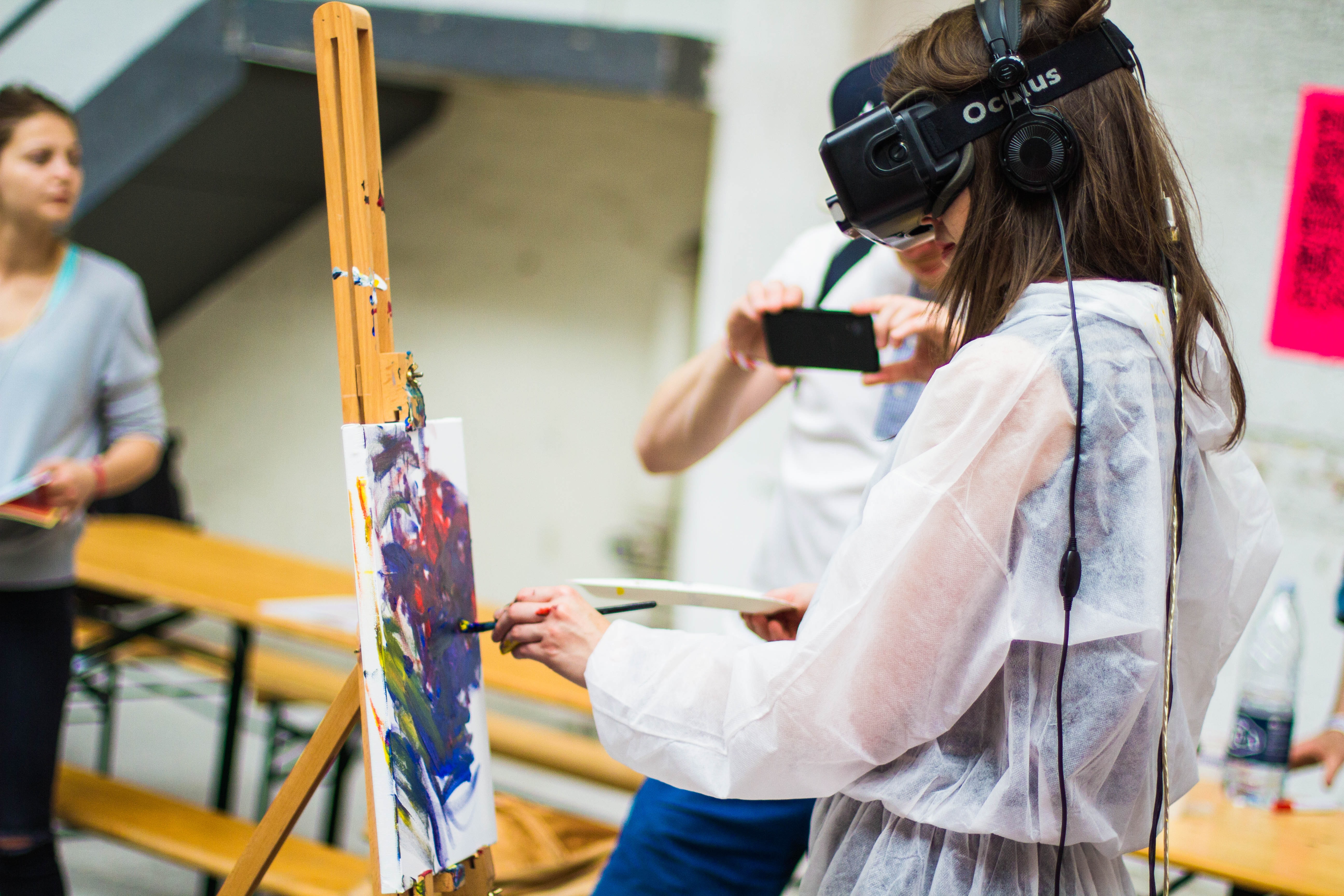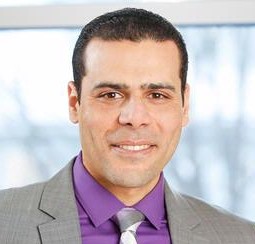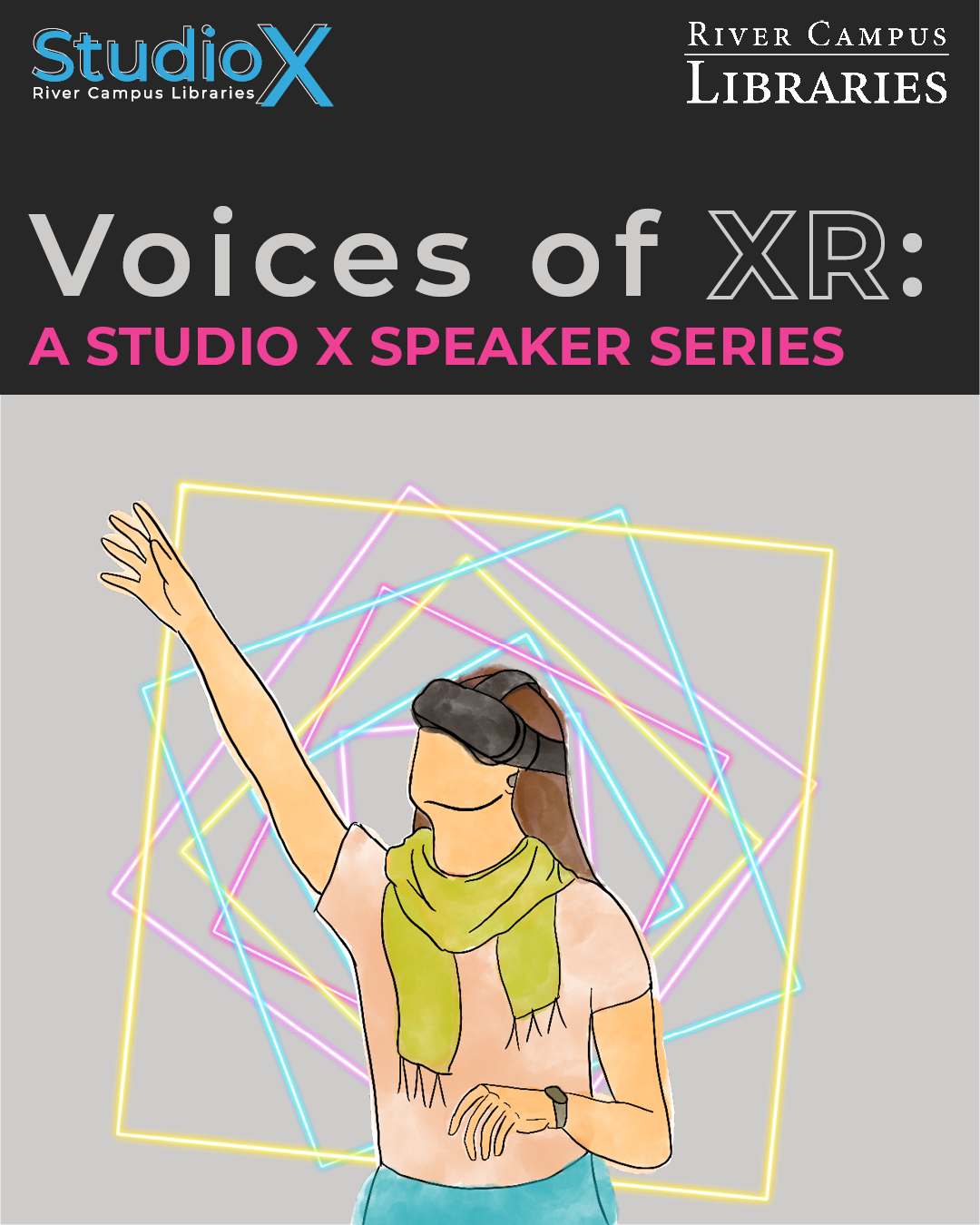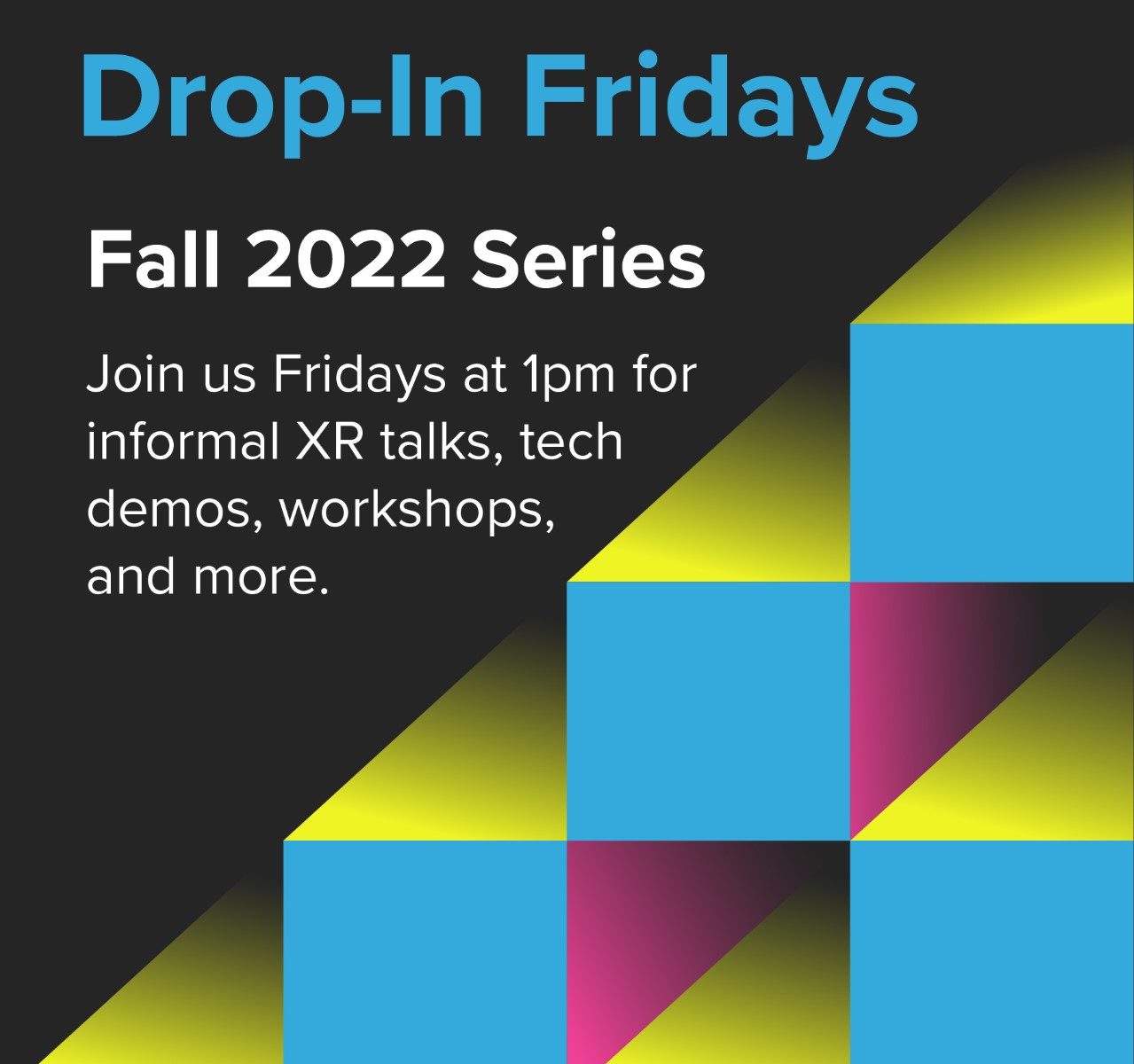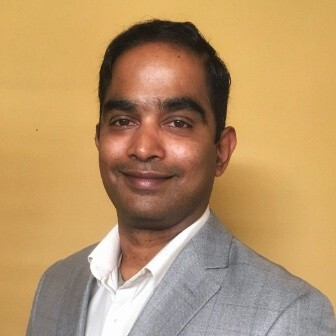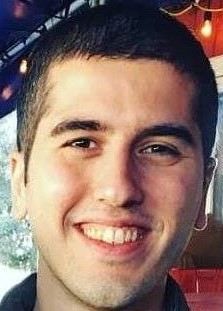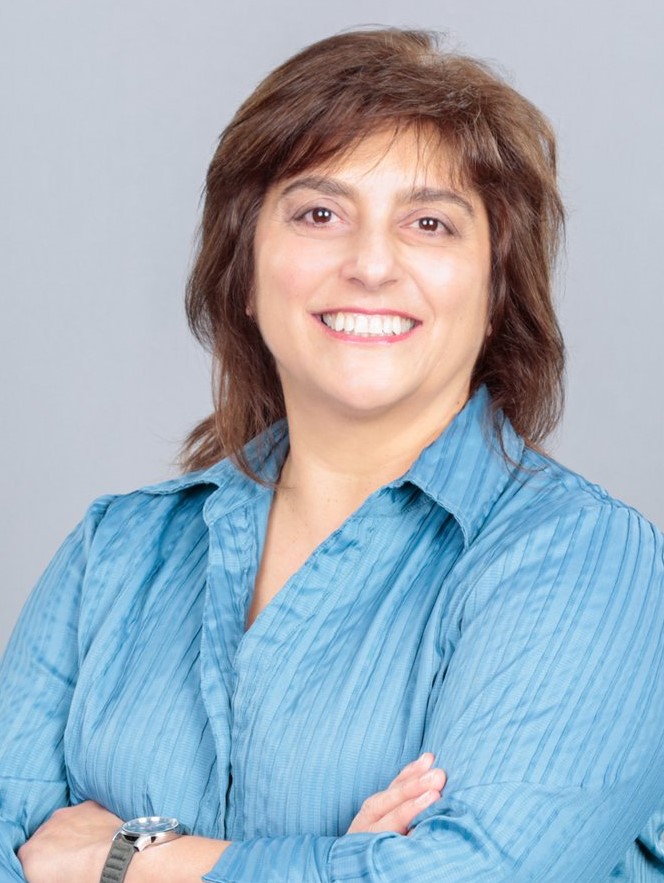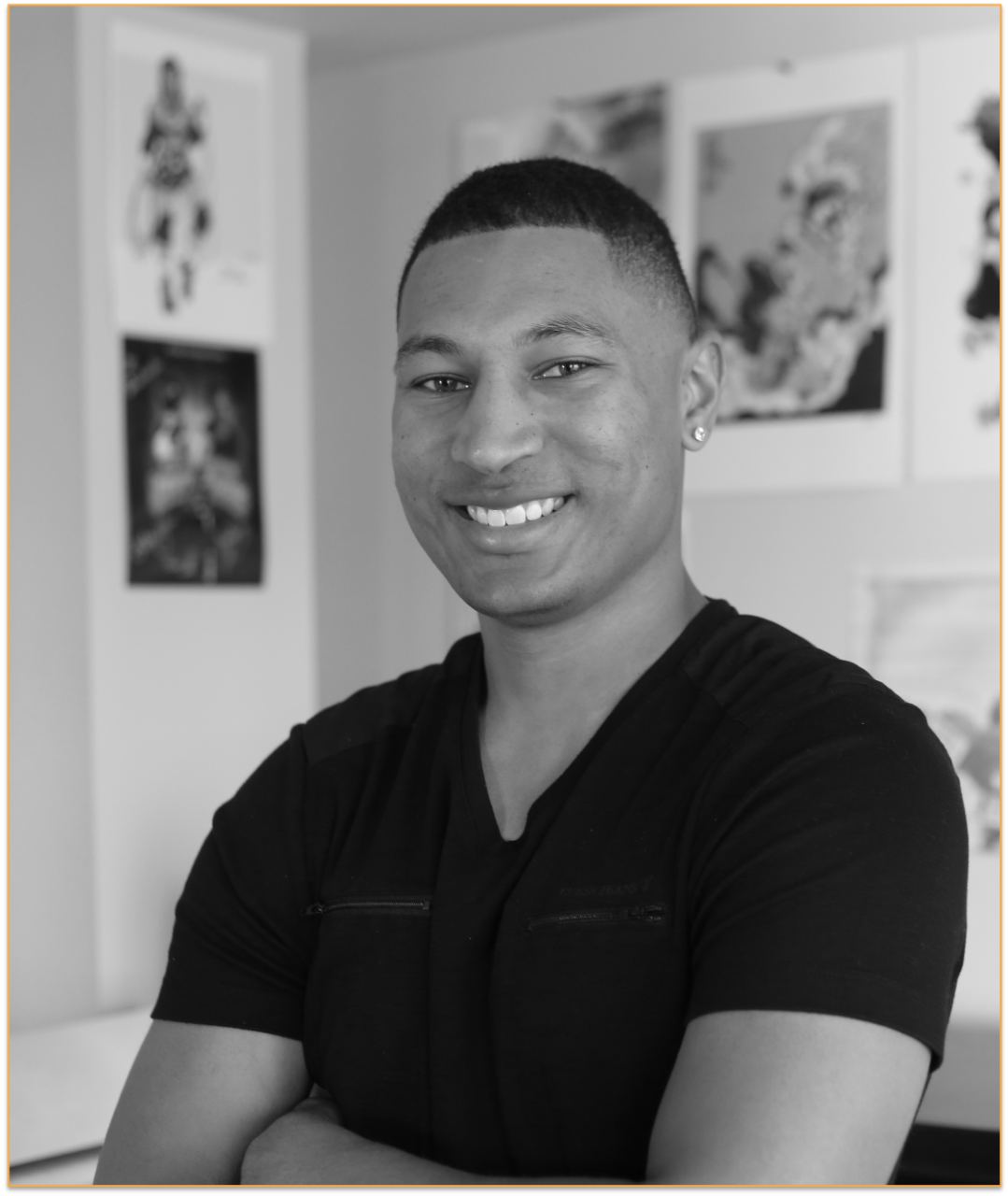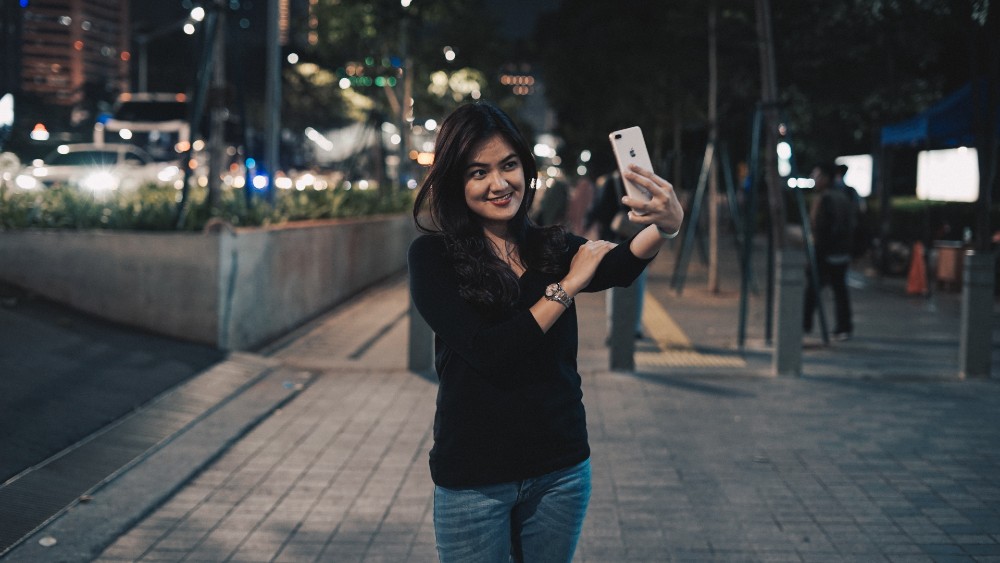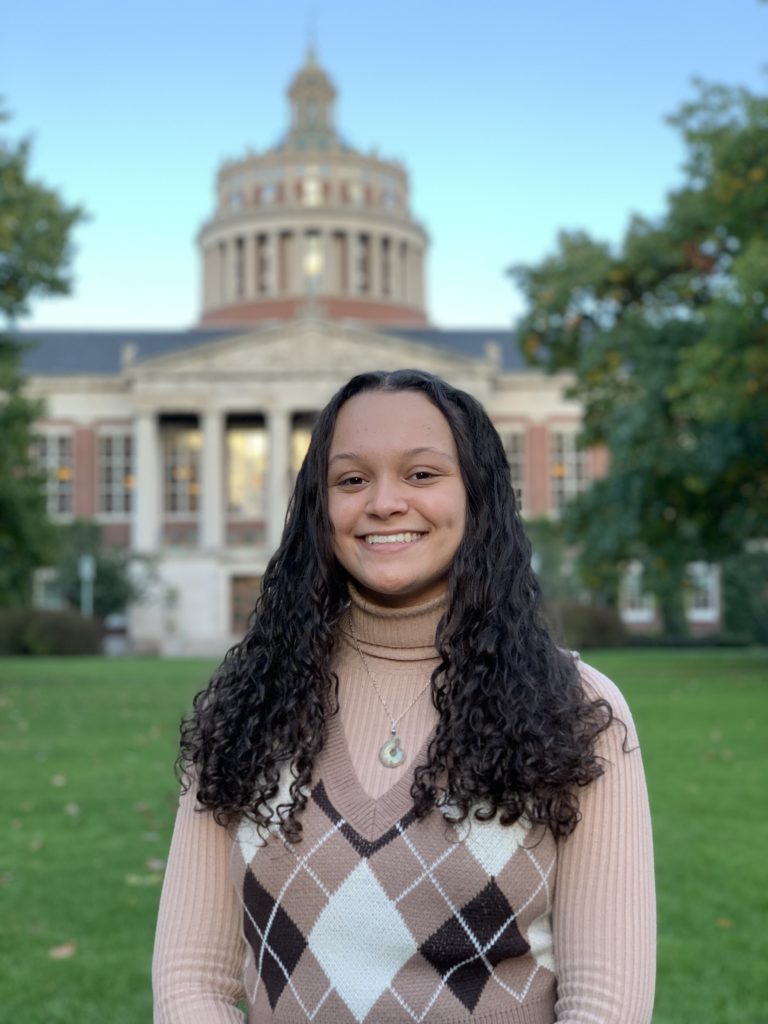
By Ayiana Crabtree
Karp Library Fellow, XR Research
February 2021 – present
Area of Focus: Conducting research to find ways humanities disciplines can benefit from XR technologies and developing future programming for Studio X that will engage humanities faculty and students
Although many humanists have embraced technologies in their research, immersive technologies are largely new territory for humanities and humanistic social sciences faculty and students. The technology is expensive, has a steep learning curve, and often comes off as a novelty rather than a viable research tool. However, as we progress into the future, it is important to recognize the benefits that immersive technologies could offer these disciplines.
Extended Reality, also known as XR, is the term that encompasses virtual reality (VR), augmented reality (AR), and mixed reality (MR) technologies.
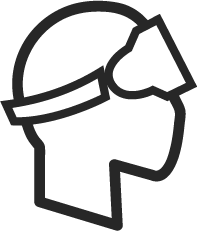
With a VR headset, a user is immersed in a computer-simulated environment in which they can experience realistic sounds, images, and 3D content.

AR is an overlay of computer-generated images on the real world. AR uses our existing reality as the basis of the experience, and with the help of a device, this creates an interactive experience for users.
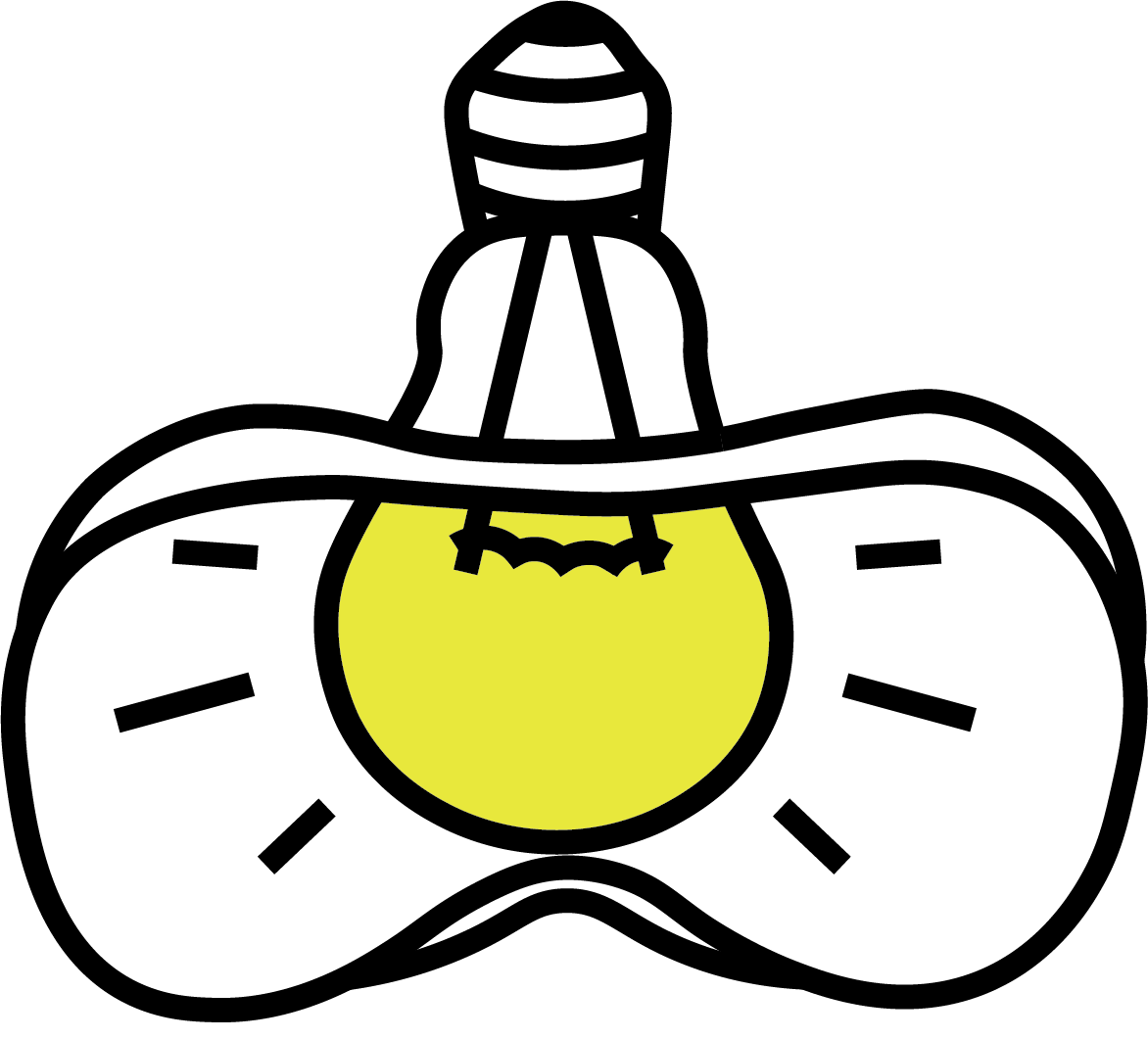
MR, sometimes referred to as a hybrid reality, is when there is a merging of the real and virtual worlds. The important distinction between AR and MR is that with MR the virtual and real worlds are able to interact in real time.
These technologies have the potential to create new experiences for the humanities and humanistic social sciences teaching, research, and learning communities. From getting an immersive language learning experience through VR tours of countries, to creating new interactive works of art, to exploring the worlds found in the pages of classic novels, the possibilities are endless!
Below are just a few examples of the many ways XR is used across these disciplines:
Archaeology, Anthropology, History
Joshi, Naveen. “VR is assisting historians and archaeologists. Here’s how.” Allerin, 5 Nov. 2020, www.allerin.com/blog/vr-is-assisting-historians-and-archaeologists-heres-how.
Allerin’s article shows how photogrammetry—the process of digitally overlapping photographs to turn them into 3D models—can be used to enhance research in the archaeological field by applying it to VR technology. From allowing recreations of archaeological sites and providing access to constricted areas to helping increase skillsets to educating archaeologists, we’re already seeing the benefits of VR to the archaeological field. These applications can allow archeologist to analyze and research more conveniently while giving greater detail than simple photographs of a site. Technology like this could be extremely beneficial and could encourage new people to join the field because of the accessibility it provides.
Art
“Creating Art in Virtual Reality.” VIAR 360, www.viar360.com/creating-art-in-virtual-reality/.
VIAR 360’s article provides a new take on ways art can be created and performed by using the VR space as a new medium for work. It answers important questions about how VR experiences are produced, why they could be beneficial to the field, and provides examples of ways people can use VR applications in practice. The question of whether or not VR could be the future of art is raised. Not only is it the future, but it is already here.
Using VR to create art gives artists more freedom in their designs while having ease of access. By slipping into the VR world, anything can be created in a three-dimensional space, allowing artists a new medium to think and create in. This could allow sculptors to visualize projects and can give painters the opportunity to create 3D paintings. These pre-project visualizations can help by allowing artists to test out new ideas before attempting them with materials. It also provides opportunities for them to expand and try new ways of conveying messages in their artwork. One popular application that would allow them to do this is Tilt Brush, a popular, open-source 3D painting platform. The possibilities are endless when it comes to all the different opportunities for new works that could be created in the VR medium.
Cultural Heritage, Archaeology, Anthropology, History, Teaching & Learning
Shedd, Karin. “Students ‘visit’ a lost archaeological treasure via virtual reality.” YaleNews, 25 Sept. 2017, news.yale.edu/2017/09/25/students-visit-lost-archaeological-treasure-virtual-reality.
YaleNews highlights the importance of VR in modeling cultural heritage sites for the purposes of student learning. Not only does this allow students to experience the site without needing to travel across the world, but it also allows them to visit a place that might not exist anymore. The students visited the ancient city of Nimrud, 30 kilometers south of Mosul in Iraq. Through immersive technologies, people are able to preserve heritage sites for future generations to experience, something that is important in the preservation of culture, especially in learning and understanding it. Visiting the sight in VR allows one to get a sense of the grandness of the space you are visiting, something that reading a book can’t do for you. This enhances the experience by allowing students to grasp how important these structures were, which could be relevant in their research.
While there was some initial skepticism about using VR, the benefits ended up outweighing the negatives. There is no comparison between visiting a site in person versus visiting it in VR, but for the purposes of the classroom, VR provides real opportunities for access in allowing instructors to showcase important sites to their students. Another benefit and future application could be to recreate places that have been destroyed, granting access to sites that no one has seen for decades or centuries.
Film
“How the movie industry uses virtual reality.” VR Sync, 2 Jan. 2020, vr-sync.com/how-the-movie-industry-uses-virtual-reality/.
From “Ready Player One” and the “Martian” to “The Lion King” and “Mission Impossible,” VR Sync’s article takes a close look into how VR can be used in the movie making process. Virtual cameras, application in animation, marketing and promotion, 360 movies, and VR movies are all different ways that the film industry uses VR to aid in their processes. Through the current use of VR in such a wide range of categories, it is evident that this technology is key to the future of the film industry. Seeing the technology develop from something in movies to something used to make movies is a fascinating growth and sets the stage for all kinds of use in the future.
History & Teaching & Learning
Yildirim, Gurkan, et al. “Analysis of Use of Virtual Reality Technologies in History Education: A Case Study.” Asian Journal of Education and Training, vol. 4, no. 2, 15 Feb. 2018, pp. 62-69, doi:10.20448/journal.522.2018.42.62.69. https://files.eric.ed.gov/fulltext/EJ1170733.pdf.
This case study looks at how VR can be used in the classroom to teach history classes. They found that students enjoyed the feeling of being present in the environment and being able to access destinations that are difficult to visit in real life. Going more in depth, the responses from each student seemed to be quite similar: they likened it to living in the places and enjoyed the more interactive aspects. VR experiences allowed students to focus on a particular topic and to not be easily distracted. One participant noted a downside: the long-term use of the headset and virtual experience caused eye strain.
As a whole, it is important to realize that while this may be the direction technology is heading, there is still some value to traditional teaching methods. The virtual reality classroom might not be good for an entire lecture, as it is important to see the instructor and interact in person, but is good for brief exercises and visiting foreign sights that wouldn’t be readily accessible in a classroom setting.
Language & Culture, Teaching & Learning
Wesley, Steven. “Learn a Language in Realistic VR Scenarios with these Apps.” VirtualSpeech, 28 Feb. 2018, virtualspeech.com/blog/learn-language-vr-scenarios-apps.
Virtual Speech’s article explains the benefits of learning a language in the VR environment. Not only does this allow for an immersive setting that forces the participants to adapt to the learning experience, but it also provides the same comfort of learning at their own pace. This style of learning is likened to the immersive experience of visiting a foreign country and trying to learn there. The article provides some examples of language learning apps as well as detailed descriptions of what learners will gain.
Learning a language in an immersive environment without needing to go abroad could be revolutionary for a college learning environment. VR can allow a student to challenge themselves without putting them out of their comfort zones. Sometimes being outside of your comfort zone can be beneficial, but for those with anxiety, this technology can help prepare them for the real situation, which leads to a better learning experience overall.
Literature
Breeze, Mez. “Virtual Reality Literature: Examples and Potentials.” The Writing Platform, 20 July 2018, thewritingplatform.com/2018/07/virtual-reality-literature-examples-potentials/.
The Writing Platform gives a look into the world of literature and how VR can be used to enhance a reader’s experience. Digital literature has existed for a while but moving it into the XR fields is a newer development. Not only does this new medium allow for a more interactive experience, but it can also give people a different outlook on the importance of storytelling and how it impacts them. Reading can give people a certain level of immersion depending on the imagination they have, but by adding VR into the literary experience, the immersion into the world becomes even more intense, allowing for a new reading experience. Being able to step into the pages of one’s favorite book would not only allow readers to become more connected with the literature but also provide a new experience in terms of how they view the literature and potentially its meaning.
The potential of VR and literature have no bounds, though it is important to draw a line between digital literature and VR movies and games. There should be some interactive element as well but not enough to make it into a videogame, as digital literature should focus on the storytelling primarily. Another interesting application of VR and literature would be to create a 3D space that represents the world of an already existing novel. Classic literature could be explored in new depths using VR, and the potential is never-ending. One example of digital literature mentioned is “A Place Called Ormalcy.” It was entirely designed for and developed in VR constructed using MasterpieceVR to create each chapter.
Psychology
Martin, Sam. “Virtual Reality Might Be the Next Big Thing for Mental Health.” Scientific American, 24 June 2019, blogs.scientificamerican.com/observations/virtual-reality-might-be-the-next-big-thing-for-mental-health/.
The Scientific American dives right into the benefits of using VR to give insight into the working of human brains. Mental health has always been a predominant issue in society, and VR technology could help remedy mental health issues such as depression, anxiety, PTSD, and other things like fears. From applications in therapy to diagnosing symptoms, VR could be a great help to psychologists and other mental health professionals. VR has already proved successful in treating PTSD, and work is being done to see if it can be used for other issues such as addiction, claustrophobia, and teenage depression through exposure therapy. VR applications for diagnosis can test people for schizophrenia, ADHD, and autism.
The opportunities that VR provide for diagnosis and treatment of mental health disorders is something that will definitely be expanded upon in the future. The importance that this application holds is vital, as it could help people who don’t feel comfortable going to talk to a real person about their issues, as well as catching an underlying problem that might have gone undetected. While this technology still needs more experimentation, it is still a step in the right direction for creating new ways to help people with mental health issues.
Social Justice & Film
Warren, Matt. “Balancing Social Justice and Immersive Entertainment.” Film Independent, 29 Oct. 2019, www.filmindependent.org/blog/balancing-social-justice-and-immersive-entertainment/.
This article by Film Independent talks about the importance of representing social justice in the immersive entertainment industry. Representation in the media is extremely important, so when a new form of media arises, the need for representation expands to this new platform. XR technology provides many different new ways of communicating concepts and ideas to a wide variety of audiences and ensuring some presence of representation for social justice is crucial. From art to movies to video games, there are many different ways that XR is used to communicate with the world, so using this as a platform to advocate for LGBTQ+ rights, BLM, and other social conscious ideas is a no brainer. The article includes a recorded talk by several exciting immersive storytellers as well as giving examples of projects that are already out there for people to experience. One story is Shogaolu’s Another Dream. It is the third installment of her Queer in a Time of Forced Migration multi-media series, which takes a look at the stories of politically displaced LGBTQ+ people. The potential for the advocation for social justice will grow with the VR platform, and it should not be ignored.
Tourism
“VR for Tourism.” Immersion VR, immersionvr.co.uk/about-360vr/vr-for-tourism/.
Immersion VR’s article speaks about how the tourism industry is being revolutionized by the VR medium. From the wide scale of flyover tours to the detail of visiting ancient sites, the possibilities that are achievable with VR technology are endless. Rather than simply using computer-generated images, 360 VR tourism is becoming more and more popular as it uses actual images from the sites, providing a more realistic experience. Another application besides interactive tourism entails 360 VR videos in which you can sit and look around while not needing to control anything.
The future of VR travel is growing rapidly, especially because of the COVID-19 pandemic, and the amount of resources available are on the rise. Some even go as far as to have VR flight experiences to pretend they are traveling from destination to destination. Other applications include VR booking interfaces, travel for senior citizens, and landmark destination experiences.

